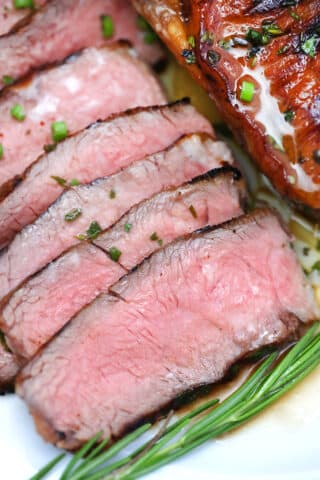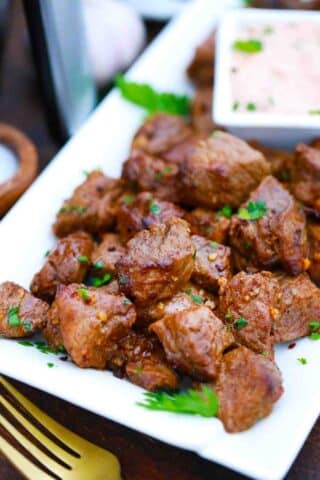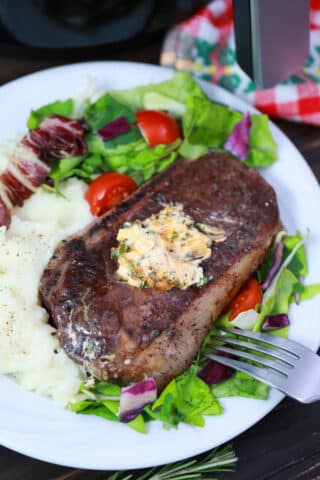Asian Steak Marinade
Let me show you how to instantly transform a simple cut of meat into a fantastic meal, bursting with flavor. I always rely on my quick and easy Asian Steak Marinade, to infuse and elevate my steaks. Ready in 5 minutes, this marinade is easy to make with ingredients that most people likely have in their pantry.
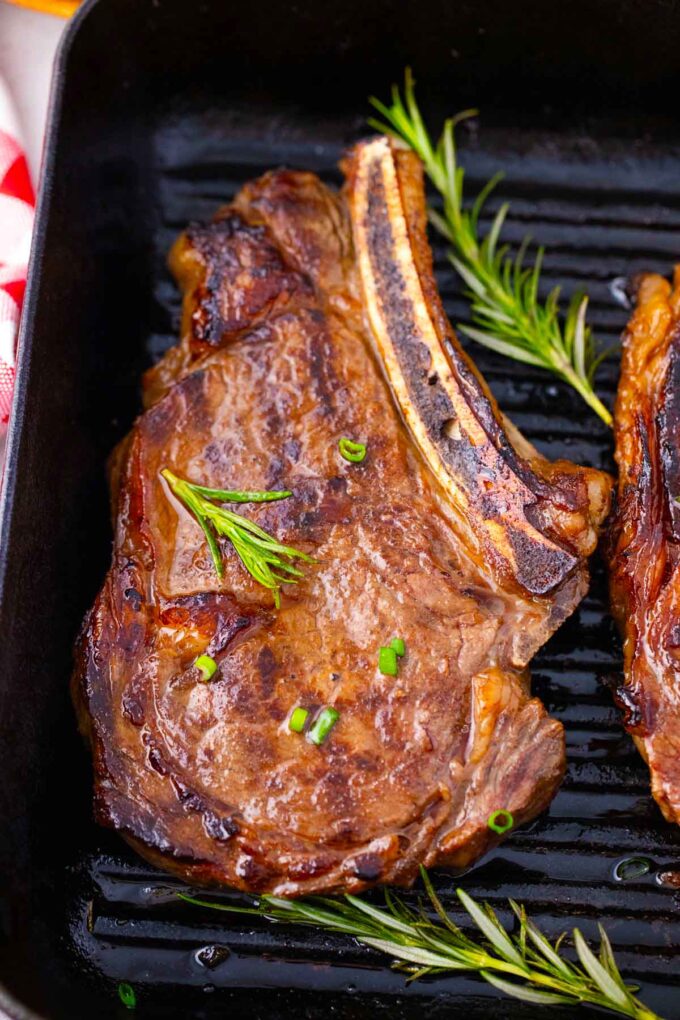
If you’re looking to elevate your steak game, this is the perfect recipe. The blend of soy sauce, garlic, ginger, brown sugar, and maple syrup adds the perfect touch of sweetness and umami flavor, making a regular grilled steak taste like it’s from a high-end restaurant. I like to serve mine with grilled potatoes and Mexican street corn on the cob.
Table of contents
This marinade comes together in minutes, so I use it year-round, even for quick and effortless weeknight dinners, when I cook steaks indoors on a grill pan. No fancy technique is required, and if you use a cut like ribeye, it only takes 15 minutes to marinate. This marinade is also delicious on chicken, pork chops and veggies. Once yoy try it, just like me, you will find yourself using it to add flavor to many dishes.
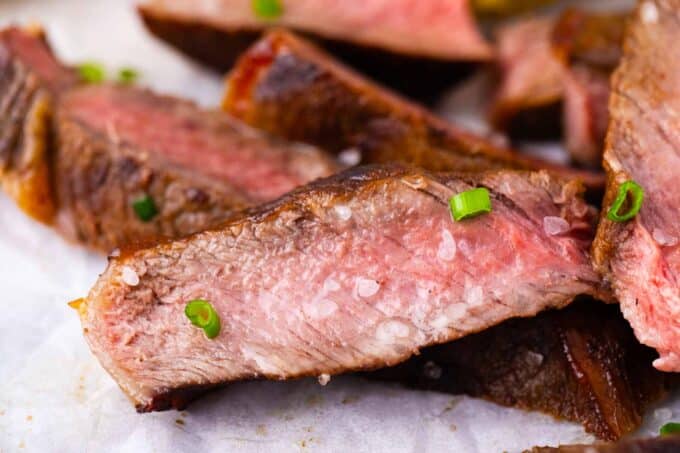
Why you will love this recipe
- Just a few ingredients: Besides the steak, all you need is marinade ingredients.
- Minimal clean-ul: I mix the marinade in a bowl and add the steaks. To cook the meat I either use a grill pan or my gas grill. I love it that I don’t have to dirty many dishes to make this recipe.
- Fast and easy: Marinade and grill. You cannot get a much simpler recipe.
- Versatile: Serve as steaks or use them to make steak sandwiches, tacos, salads, or wraps.
What you will need
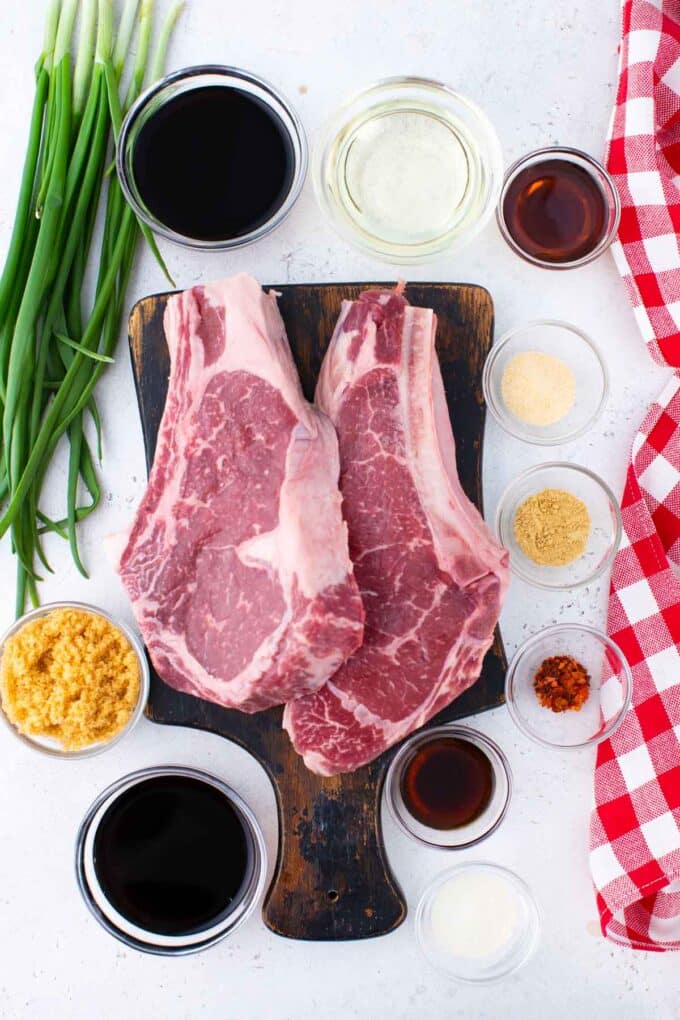
- Ribeye steaks: I chose four 8-ounce steaks, about 1.5 inches thick.
- Liquids: Soy sauce plus Worcestershire sauce for that umami flavor, and balsamic vinegar to add rich sweetness, as well as tanginess and acidity, to tenderize the meat.
- Vegetable oil: To help all the ingredients come together.
- Sweeteners: Brown sugar is thick and rich, adding a pleasant, molasses taste. While the maple syrup’s rich sweetness clings to the meat.
- Seasoning: I use a mix of onion powder, garlic powder, and ginger powder, plus a bit of red pepper flakes for some heat.
- Green onion – Chopped roughly and sprinkled on top when serving.
How to make it
Marinade: First, I whisk all the marinade ingredients in a large bowl.
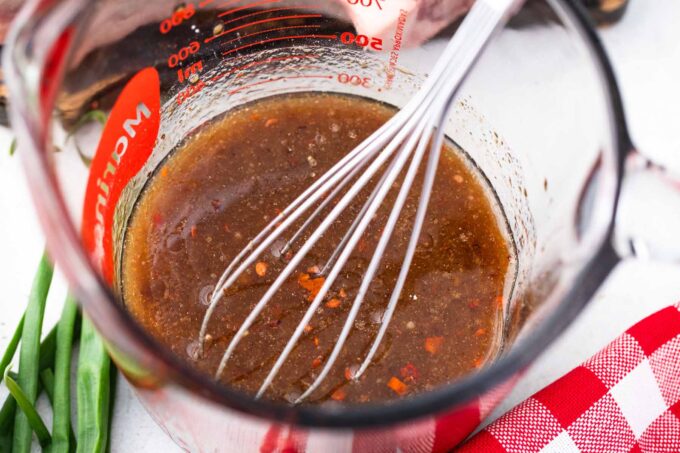
Marinate: Then, I add the steaks in the dish if they all fit. If not, I double the marinade and use two bowls. The steaks need to be submerged in the marinade, or you must flip them several times so both sides get even coverage. Chill for 15 to 20 minutes.
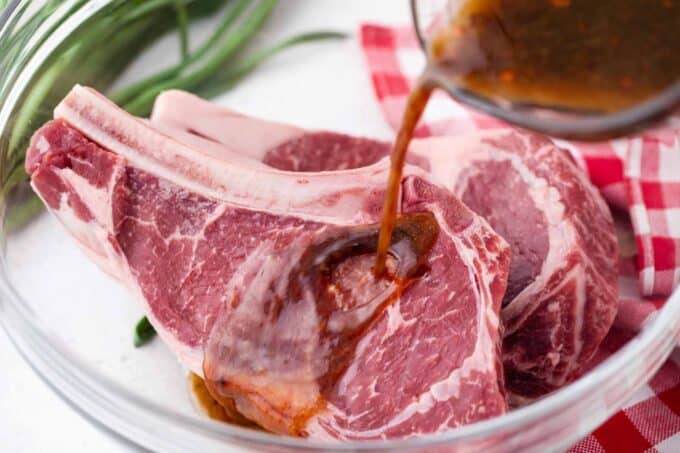
Cook: In the meantime, oil the grill and preheat to sizzling. When it is hot enough, use tongs to transfer your steaks to the grill and cook until three degrees before the desired doneness is reached. Using a meat thermometer, rare is 125 degrees F, medium rare is 135 degrees F, medium 145 degrees F, medium well is 150 degrees F, well-done is 155 degrees F.
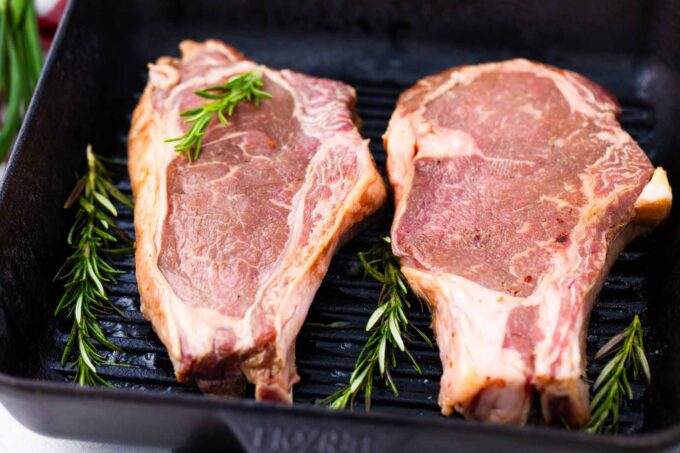
Rest and serve: I remove the steaks from the heat and let them rest for 5 minutes before serving, garnished with green onions.
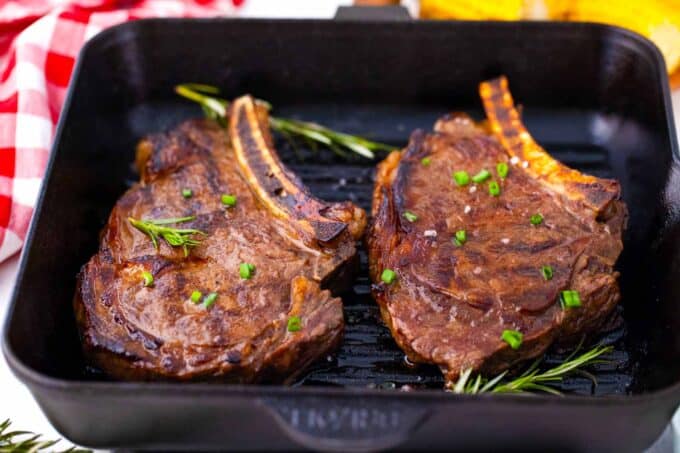
Steak cooking times and doneness:
| Doneness | Internal Temp | Cooking time per side | Center |
| Rare | 120–125°F (49–52°C) | 2–3 mins | Cool, red center. |
| Medium Rare | 130–135°F (54–57°C) | 3–4 mins | Warm, red center, very juicy. |
| Medium | 140–145°F (60–63°C) | 4–5 mins | Warm, pink center. |
| Medium Well | 150–155°F (65–68°C) | 5–6 mins | Slightly pink center, less juicy. |
| Well Done | 160°F+ (71°C+) | 6–7 mins | Fully cooked, little to no pink center. |

Expert tips
How long to marinate steak
First, not all steaks need to be marinated. Those that need the extra TLC are the lean and thin ones without marbled fat, like skirt and flank steaks or a sirloin tri-tip. They come from muscular areas that are tougher due to being worked out all the time, so there is less fat and tenderness. These will need to be marinated to be tenderized.
But marinating is not just for tenderizing. It also brings out and adds flavor to the meat. Tougher cuts like round, flank, skirt, and sirloin need at least six hours. Never marinate longer than 24 hours, or the meat fibers break down and make it mushy. However, if you’re going to marinate a tender steak, such as a ribeye, T-bone, tenderloin, New York strip, or porterhouse, only marinate it for 15 to 20 minutes. The fibers in these steaks are much more tender and will break down faster. In this recipe, I use ribeye and marinate it for 15 minutes.
How to choose the best steak cut:
Want a pro tip? Ask your local butcher! They know which ones make for the best steaks! But if he’s out of town and you need a quick guide, refer to this section for recommendations.
- Good marbling: Having some fat is beneficial since it dries out much slower than lean ones. But too much can be bad for your health, too, so trim the excess ones if present.
- Fresh: As a rule of thumb, get only the fresh ones that have nice color! The meat must be dry, too, not slimy or dripping wet.
- Thick: It’s best to get thicker ones if you want rare to medium-rare steaks, because the inside will cook more slowly while the outside is being charred.
- Tenderness: For flavorful and tender cuts, opt for tenderloin or ribeye. But these are more expensive than tougher cuts like flank or skirt, for which this marinade works best!
More tips to consider:
- Always slice meat against the grain, no matter what kind of steak it is.
- Please do not reuse the marinade after the meat has soaked in it.
- Use a meat thermometer and remove the steaks as soon as they reach the desired temperature, so they don’t overcook.
- The grill should be sizzling hot when you place the steak on it. It must be scorching hot when you put the beef in. This will give the surface a nice char, sealing in the flavors.
- Once you put the meat on the hot grill, keep an eye on it as some cuts may dry out faster than others.
- Poking holes in the steak for marinating is fine if you sear it before cooking or if you cook it at a high temperature.
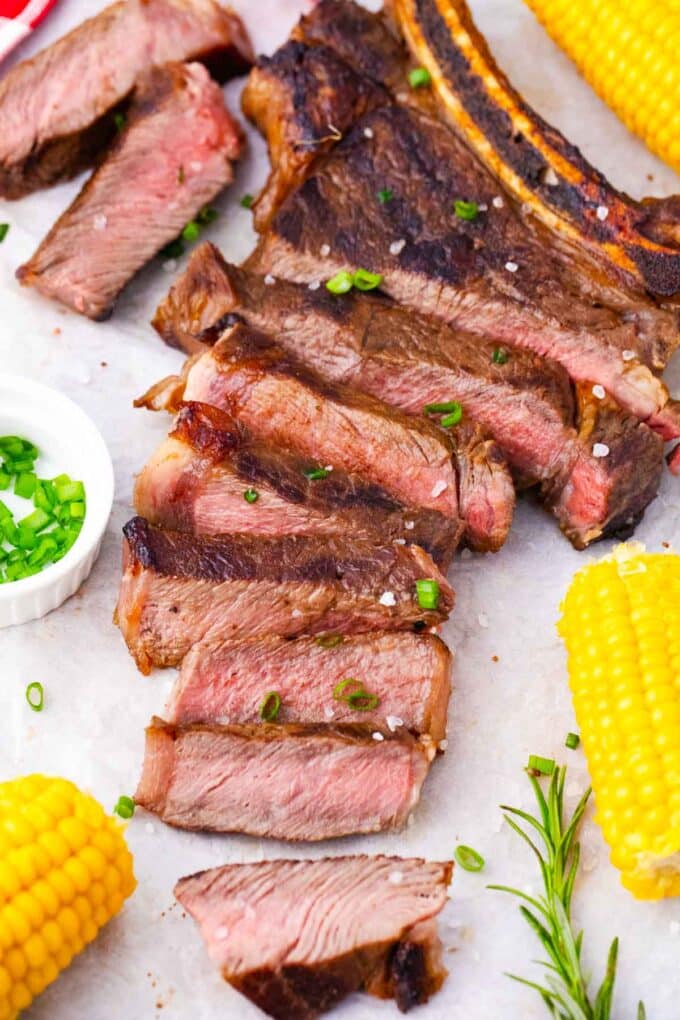
Recipe variations and add-ins:
- Other vinegars: Instead of balsamic, try experimenting with different types of vinegar, such as red wine vinegar, white wine vinegar, rice vinegar, and apple cider vinegar. They all have unique flavors.
- Tropical twist: Replace the balsamic vinegar with concentrated pineapple juice, toss in some pineapple chunks, and garnish with toasted coconut for a tropical Asian marinade.
- Ranch flavor: Add some ranch flavor to your marinade. Just add a teaspoon of ranch seasoning to the other ingredients, and it will blend in perfectly.
- Give it a kick: For spicy food lovers like my husband, toss in some sriracha sauce, chopped jalapenos, and cayenne pepper.
- No syrup: Instead of maple syrup, you can use your favorite honey, corn syrup, or agave.
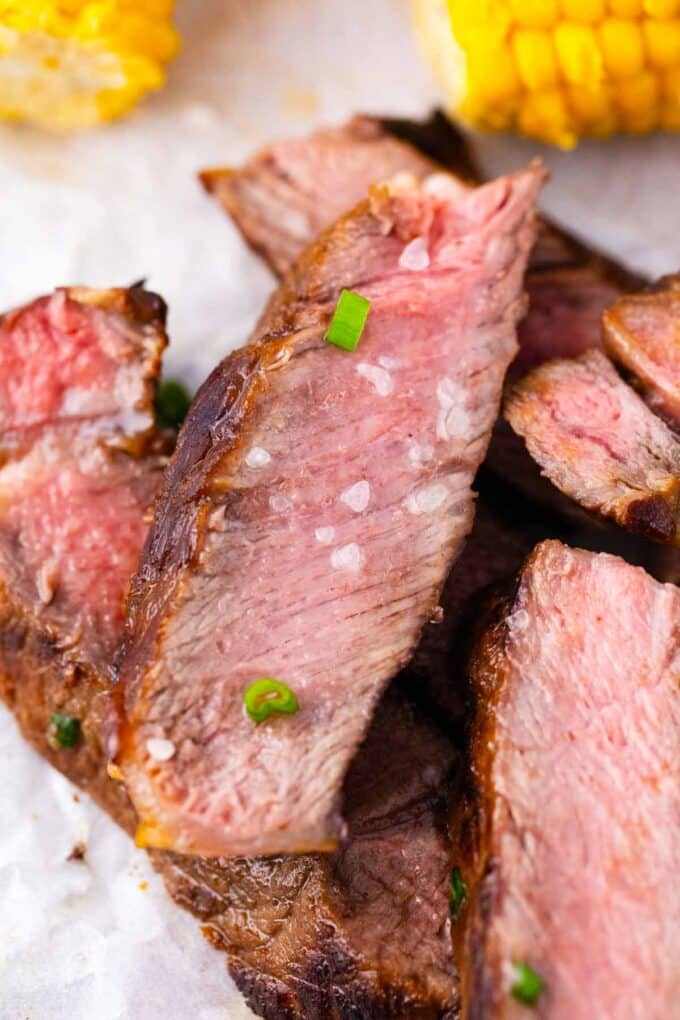
Serving suggestions:
Since this is an Asian inspired recipe, I like to serve these steaks with a drizzle of homemade teriyaki sauce or spicy Szechuan sauce. I love this dish with a perfect baked potato on the side, creamy tomato and cucumber salad and cheesy mac and cheese. For a complete Asian meal, serve these steaks sliced thin on top of my soba noodles. They are easy to make with just a few ingredients.
My kids like it when I chop these up and make tacos out of them. Then, I let them add their toppings. We usually serve them bar style, and I make homemade guacamole, pico de gallo, plus rice and beans. Another fun way to eat these is to slice them thin and let everyone make their sandwiches. Set out different types of bread, buns, fillings, toppings, and condiments.
How to store:
- Refrigerate: Wrap your steak in plastic wrap and foil, or place it in a storage bag, and keep it refrigerated for up to 4 days.
- Freezing: To keep it longer, wrap it in plastic or foil, then place it in a freezer bag. It can remain frozen for up to three months.
- Defrost: Thaw overnight in your refrigerator for the best flavor.
- Reheating: To reheat, place it in a microwave-safe dish and heat for one to two minutes.
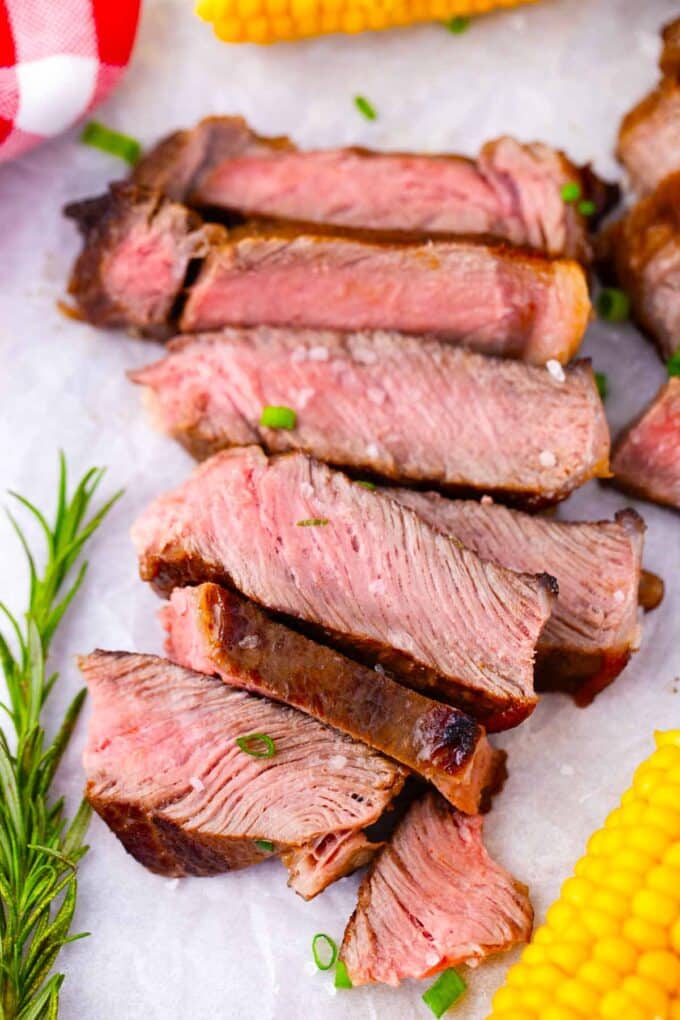
Frequently asked questions
This is a highly debated topic in the cooking world. Many say you have to poke holes in the steak so the liquid can penetrate the meat. Others say the holes will let the juices leak out of the meat. It depends on how you are cooking it. If you sear your meat or cook it quickly, you can poke all the holes you want because the muscle fibers will contract immediately, sealing in the juice. That is what searing the meat is for. But if you’re slow-cooking your meat in the oven or a crockpot, don’t pierce it unless you plan to sear it before cooking.
The USDA recommends cooking raw beef to a minimum of 145°F to kill the dangerous viruses and bacteria that can be lurking in your beef. However, many say that a rare 120 degrees F or 125 degrees F to 130 degrees F medium-rare burger is also safe because the cooking method kills “most” surface bacteria. If you eat your burgers on the lower side, there is always a risk of getting a dangerous illness from bacteria or a virus if the meat is not handled properly, but the risk is minimal.
Believe it or not, marinating steak too long can also make it tough. However, that should not be the case unless you left it in there for over two days. Instead, it is more likely that it was cooked too long. It’s essential to use a meat thermometer when cooking to ensure the meat doesn’t overcook. In this case, I use a meat thermometer that I leave in the meat as it cooks. That way, I can remove it as soon as it reaches the desired temperature. I typically take mine off when it reaches 135°F.
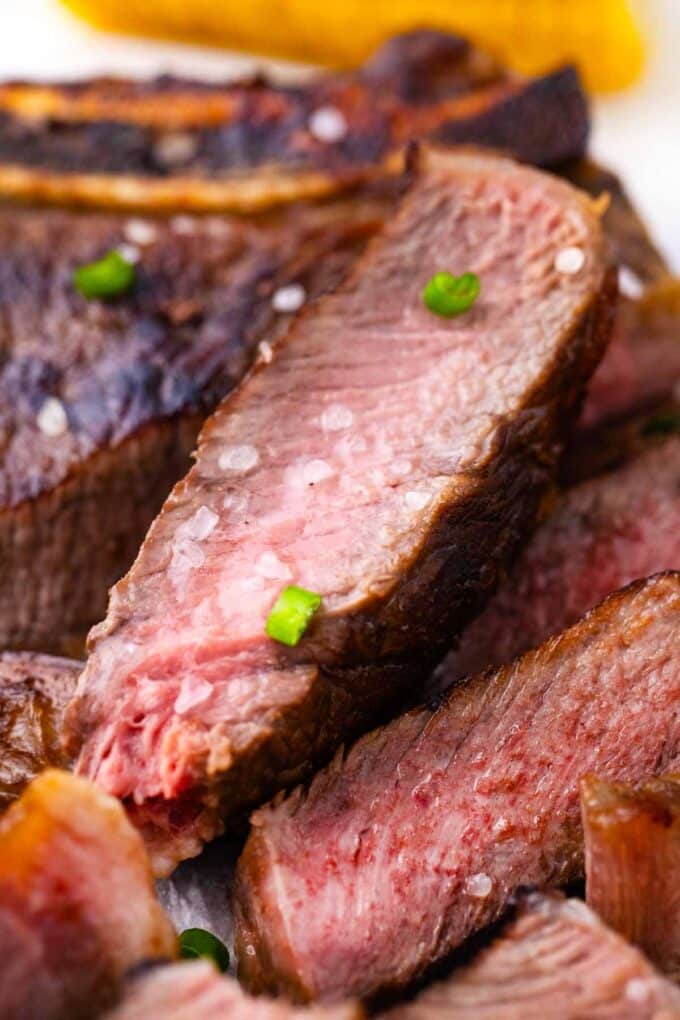
More steak recipes:
Loved this recipe? I’d love to hear from you! 💛 Leave a 5-star rating ⭐️ in the recipe card below and share your thoughts in the comments – I read and appreciate every single one!
Let’s stay connected! Follow me on Facebook, Instagram, Pinterest, and YouTube for more delicious, sweet and savory recipes. Have a question? Ask in the comments, and I’ll be happy to help! 😊 with love Catalina!
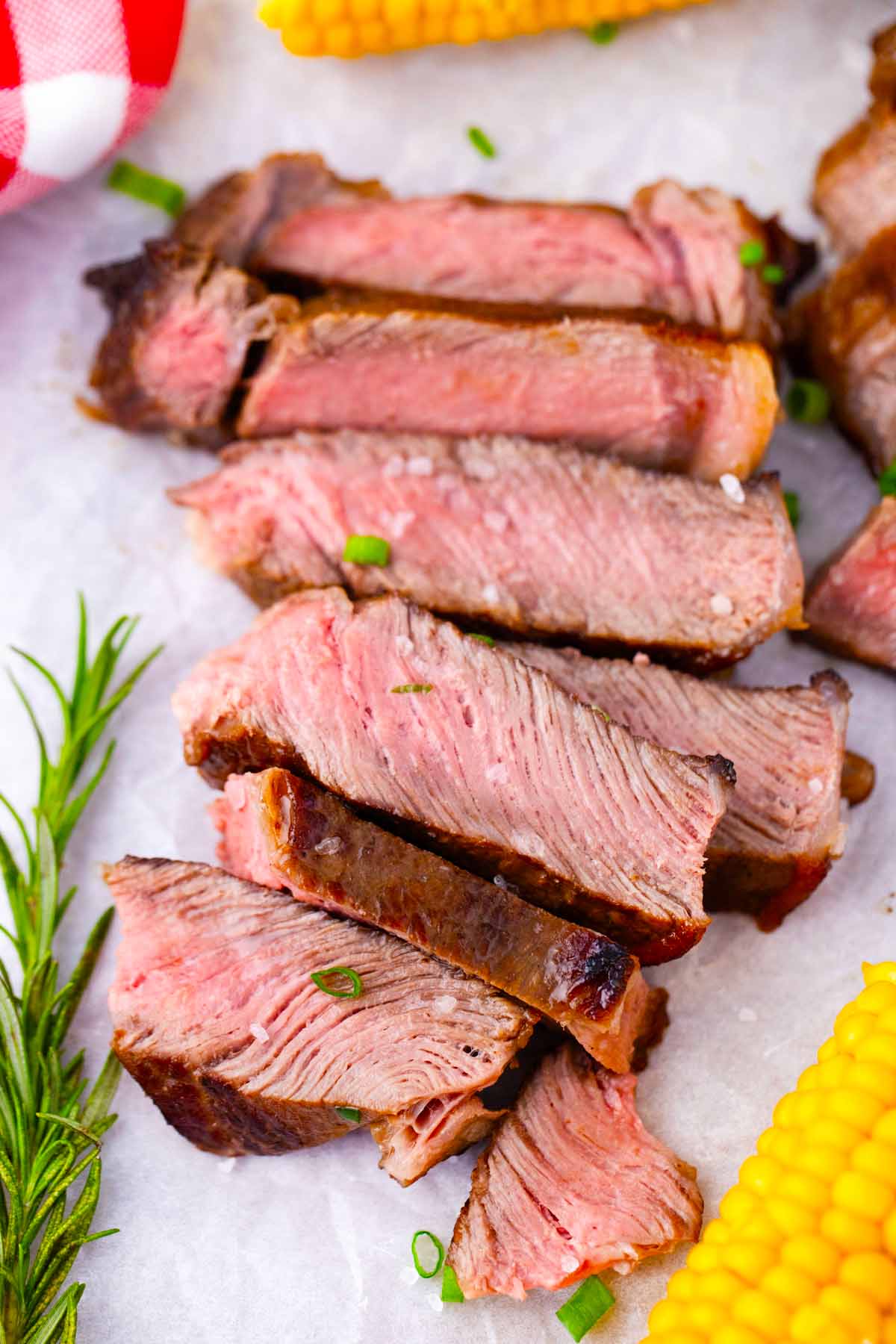
Asian Steak Marinade
Ingredients
- 4 8-ounces steaks I used ribeye
Marinade:
- 1/3 cup balsamic vinegar
- 1/3 cup soy sauce
- 1/3 cup vegetable oil
- 1 tablespoon Worcestershire sauce
- 2 tablespoons maple syrup
- 1/4 cup brown sugar
- 1 teaspoon onion powder
- 1 teaspoon garlic powder
- 1/2 teaspoon ginger powder
- 1/4 teaspoon red pepper flakes
Garnish:
- chopped green onions
Instructions
- Whisk together all the MARINADE ingredients in a bowl or a ziplock back.
- Add 2 to 4 steaks and marinade, tossing the steaks a few times to coat well. Chill for 15-20 minutes.
- Preheat a grill or a cast iron grill pan over high heat. Lightly brush with oil.
- Use tongs to transfer steaks to the preheated grill or pan. Cook until the desired doneness is reached. Use a meat thermometer to check the temperature: for rare, less than 130°F, for medium-rare, 130°F, for medium, 135°F, for medium-well, 150°F, and for well-done, 160°F.
- Allow resting for 5 minutes before serving. Garnish with fresh green onions if desired.
Video

Notes
How long to marinate steak
First, not all steaks need to be marinated. Those that need the extra TLC are the lean and thin ones without marbled fat, like skirt and flank steaks or a sirloin tri-tip. They come from muscular areas that are tougher due to being worked out all the time, so there is less fat and tenderness. These will need to be marinated to be tenderized. But marinating is not just for tenderizing. It also brings out and adds flavor to the meat. Tougher cuts like round, flank, skirt, and sirloin need at least six hours. Never marinate longer than 24 hours, or the meat fibers break down and make it mushy. However, if you’re going to marinate a tender steak, like a ribeye, T-bone, tenderloin, NY strip, or porterhouse, only marinate it for 15 to 20 minutes. The fibers in these steaks are much more tender and will break down faster. In this recipe, I use ribeye and marinate it for 15 minutes.How to choose the best steak cut:
- Good marbling: Having some fat is beneficial since it dries out much slower than lean ones. But too much can be bad for your health, too, so trim the excess ones if present.
- Fresh: As a rule of thumb, get only the fresh ones that have nice color! The meat must be dry, too, not slimy or dripping wet.
- Thick: It’s best to get thicker ones if you want rare to medium-rare steaks, because the inside will cook more slowly while the outside is being charred.
- Tenderness: For flavorful and tender cuts, opt for tenderloin or ribeye. But these are more expensive than tougher cuts like flank or skirt, for which this marinade works best!

